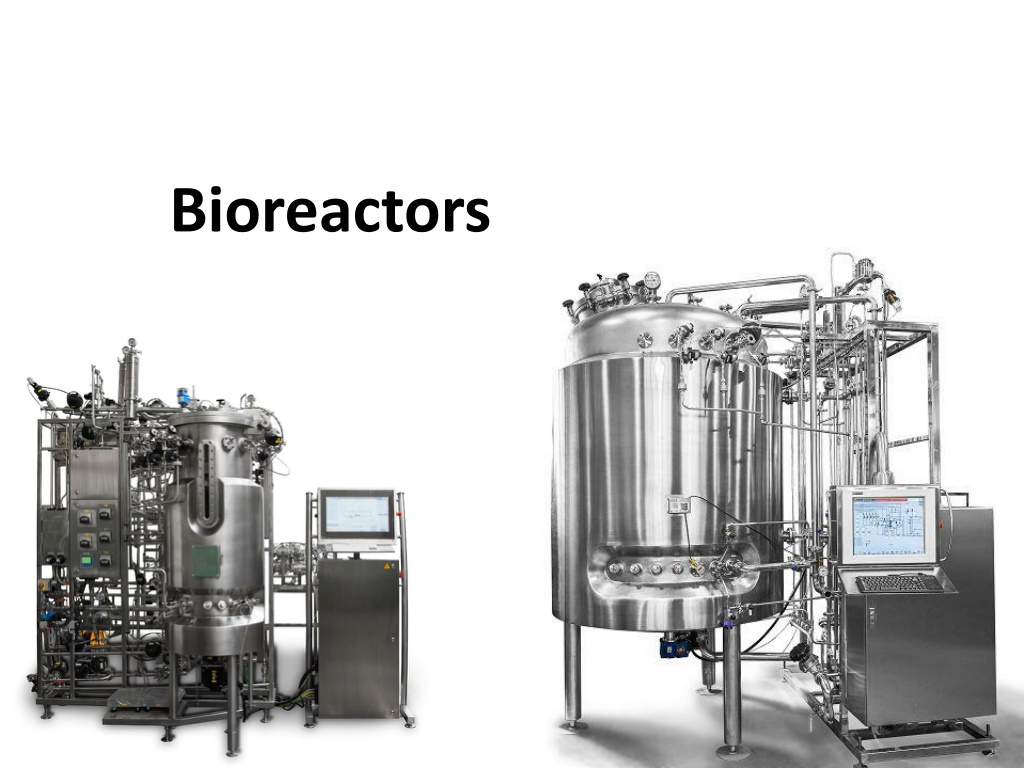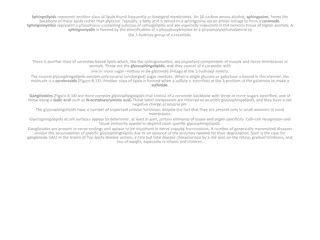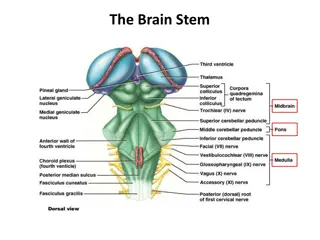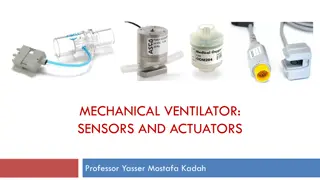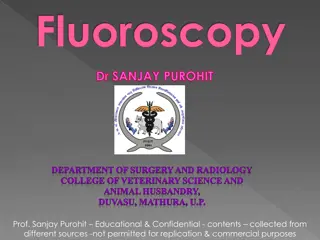Understanding Bioreactors: Components and Functions
Bioreactors are essential vessels used for the production of various chemicals and biological reactions. They provide controlled conditions for fermentation processes, including agitation, aeration, temperature, and pH control. Key components such as fermenter vessels, heating, cooling apparatus, and aeration systems play crucial roles in ensuring optimal performance. Bioreactors are versatile tools used in industries for producing biomass, metabolites, and antibiotics.
Download Presentation
Please find below an Image/Link to download the presentation.
The content on the website is provided AS IS for your information and personal use only. It may not be sold, licensed, or shared on other websites without obtaining consent from the author. Download presentation by click this link. If you encounter any issues during the download, it is possible that the publisher has removed the file from their server.
Presentation Transcript
Bioreactor- Definition Bioreactor is a type of fermentation vessel that is used for the production of various chemicals and biological reactions. It is a closed container with adequate arrangement for aeration, agitation, temperature and pH control, and drain or overflow vent to remove the waste biomass of cultured microorganisms along with their products. Bioreactors are used for the production of biomass, metabolites, and antibiotics.
A bioreactor should provide for the following: Agitation (for mixing of cells and medium), Aeration (aerobic fermentors) an oxygen delivery system, Regulation of factors like temperature, pH, pressure, aeration, nutrient feeding, and liquid leveled. Sterilization and maintenance of sterility, A foam control, Withdrawal of cells/medium Also it should be equipped by sampling ports, and lines for charging & emptying the reactor.
1. Fermenter Vessel The vessel is designed in such a way that it allows to work under controlled conditions. The inside that the vessel has is smooth, and is constructed of low-cost substances that provide the best outcomes. There are two kinds of fermentor vessels such as glass fermenter and stainless steel fermenter, for small-scale glass is the preferred choice, and for industrial use stainless steel is employed. Glass is not toxic and is resistant to corrosion. It is easy to study the internal reaction within the vessel. Sterilization is performed using autoclave. They are small fermentors that measure around 60 centimeters. The majority of stainless steel is employed for large-scale fermentations. The vessels are able to withstand corrosion and pressure. The sterilization process is performed in situ.
2. Heating and Cooling Apparatus The fermentor vessel s exterior is fitted with a cooling jacket that seals the vessel and provides cooling water. Thermostatically controlled baths or internal coils are generally used to provide heat while silicone jackets are used to remove excess heat. A cooling jacket is necessary for sterilization of the nutrient medium and removal of the heat generated during fermentation in the fermentor.
3. Aeration System An aeration system contains two separate aeration devices (sparger and impeller) to ensure proper aeration in a fermentor. Two main functions of the sparger are: It creates air bubbles that help disperse oxygen throughout wort during fermentation. And it pushes out unwanted trub from the fermenter. This makes it easier to clean the equipment and keep the beer clear. Three kinds of spargers are utilized. Porous spargers consist of sintered or ceramic and are used in vessels that do not have agitation at the scale of a laboratory. Nozzle Sparger: It s an open or partially opened single pipe. This kind of sparger is typically employed because they don t block and offer less pressure. Combined sparger-agitator: They insert air through a hollow shaft, and then release it from the holes in the disc that is drilled to connect directly to the bottom of the primary shaft. If the agitator operates in a range of rpm they will provide an adequate amount of air in an agitator with a baffle.
Impeller Sparger
4. Impeller Impellers are utilized to provide homogeneous suspensions of microbial cells in a homogeneous medium for nutrient delivery by stirring. They are made up of impeller blades attached to a motor on the lid. Impellers mix the bulk liquid with solid particles and gas phases of the culture of suspension. Impeller blades play an important role in reducing the size of air bubbles and distribute them uniformly into the fermentation media. Impellers can be classified according to Disc turbines: They comprise disc with a set of rectangular vanes. They allow an air stream from the sparger to strike on the disc s underside and then move the air toward the vanes, breaking large air bubbles down into smaller ones. Variable pitch open turbine: They also comprise a an agitator shaft that is vanned and joined to propeller blades of the marine on the shaft for the agitator. The air bubbles that make up this turbine don t touch any surface prior to dispersing.
5. Sealing Assembly The sealing assembly is utilized for the sealing of stirrer shafts to ensure proper agitation. It is able to function for longer periods of time aseptically. There are three types of sealing assembly in the fermenter: Packed gland seal Mechanical seal Magnetic drives
6. Baffles Baffles stop vortex from expanding the capacity of aeration and are composed of metal strips welded in a radial direction to the wall. Baffles are able to reduce the growth of microbial colonies on the sides of the fermenter.
7. Feed Ports Feed ports help you to add ingredients at the right times to the bioreactor. Feed ports allow for small amounts of liquid to pass through them, so nutrients can be added to or removed from fermenters without having to open them. This allows you to monitor your fermentation process continuously and makes it easy to add nutrients or remove byproducts. The feed ports consist of tubes made of silicone. In-situ sterilization is carried out prior to either the removal or the addition of ingredients.
8. Foam Control The level of foam in the vessel must be minimized to avoid contamination, this is an important aspect of the fermentor. Foam is controlled by two units, foam sensing, and a control unit. A foam-controlling device is mounted on top of the fermentor, with an inlet into the fermentor.
9. Valves and safety valves Valves are employed in the fermentor for controlling the flow of liquid inside the vessel. There are various types of valves are used, globe valve (can be used for general use, but they don t control flow), butterfly valve (are not appropriate for use in aseptic conditions. They are utilized for pipes with large diameters that operate at low pressure. ), a ball valve (can be used in aseptic conditions. They can handle mycelial broths and operate at a high temperatures) diaphragm valve (aid in adjusting flow). Globe valves. Butterfly valves Ball valves can be used in aseptic conditions. They can handle mycelial broths and operate at a high temperatures. Diaphragm valves. The safety valve is integrated into the pipe and air layout to function under pressure. Through these valves, the pressure remains within the safe boundaries.
10. Controlling Devices for Environmental Factors A variety of devices are utilized to control environmental elements like temperature, dissolved oxygen and carbon dioxide concentration, pH, cell mass, essential nutrient levels, and product concentration. For an efficient process, monitoring, and data collecting, fermentors are generally coupled with modern automated and semi-automated computers and databases.
https://www.youtube.com/watch?v=XApUZuk vbmQ https://www.youtube.com/watch?v=5eKdZ0d VCCo&t=264s
